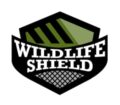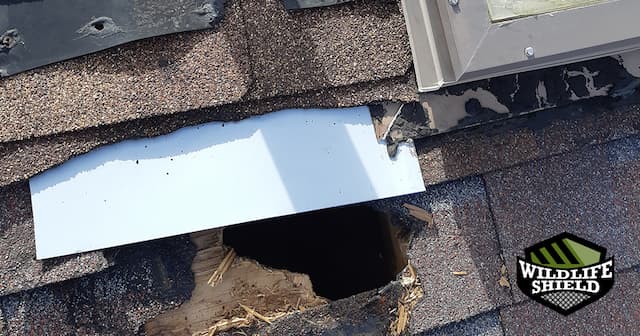The initial call to the property was for a raccoon that entered the attic of a customer through an entryway they could not find. Raccoons are constant occupiers of attics as they have the longest baby season out of all the common wild animals in southern Ontario. The raccoon can have babies from December or February straight through to august and mobile babies can be found into October. As global warming affects the temperature the raccoons are becoming more active and more intent on getting into or under a structure where they can be cool and shaded. Like humans we cannot cope with high heat temperatures and their fur does not help very much when it’s hot. Raccoons can enter an attic through almost any means. They have semi opposable thumbs that allow their hands to grasp things and are strong enough to bend back aluminum siding or rip off a plastic roof vent. They often enter through soffits which are easy to pull down especially if they are made of aluminum. Wooden soffits can be harder to penetrate.
Call Raccoon Control for a free quote over the phone!
Exterior Inspection
The initial inspection of the exterior revealed the raccoon had indeed pulled out a soffit but that was not how it initially got into the attic. Its first entryway was under a rooftop vent pipe which is usually adhered with only a small amount of material and weakens the roof beneath it. To make the situation worse it was right beside a skylight which also makes the roof easier to access. The hole it made was large and aggressive with a good chance of water leakage into the attic. This sort of event is simple enough to resolve but it is very important to remember if you are going to try and get it out yourself to make sure not to harm it or its babies. Even causing damage to your home raccoons are still protected wildlife and harming or killing them is illegal. Trying to trap a raccoon on your own is dangerous and not recommended. If you are not experienced in this process and are afraid to relocate it you will find it hard to find a wildlife technician who will do it for you. Trapping Is considered by many wildlife companies inhumane. The technician noted the opening and that it would need a one-way door installed. A one-way door is a humane way to get an animal out of your attic. By allowing it to vacate on its own it is less likely to be harmed. It will then find it impossible to get back in. The technician also noted three plumbing vents that were accessible to other small animals and rodents and
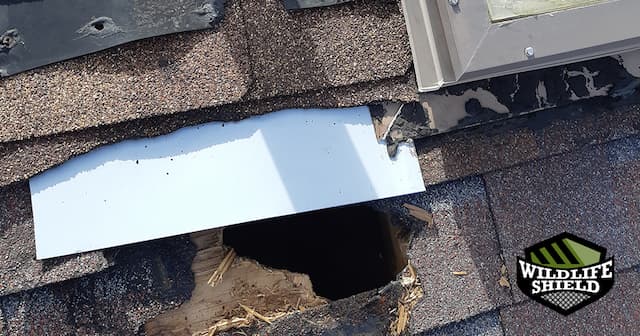
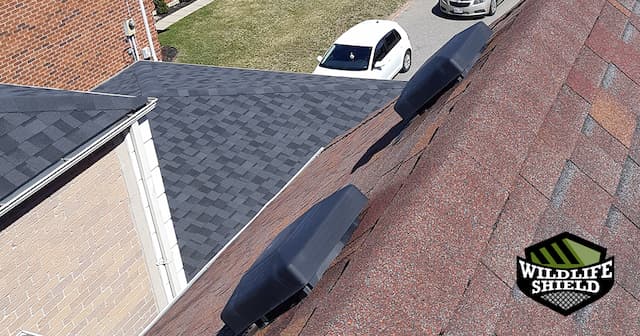
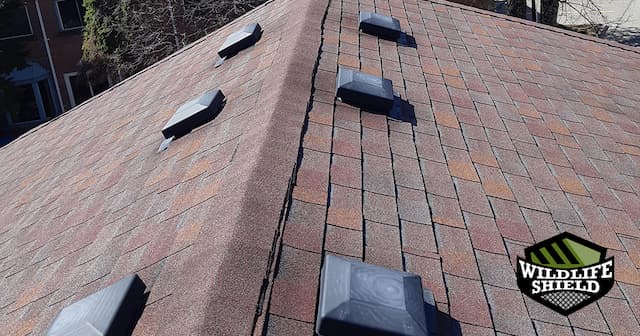
Interior inspection
The interior inspection of the attic revealed no babies initially. The technician did the inspection again hearing the customer was hearing scratching sounds in the attic. After an hour of searching with a thermal camera and a flashlight, the technician hears the wind pick up. The broken and loose soffit was making a racket that sounded very much like raccoons or mobile raccoon babies. This is common after having an animal in your attic. Being terrified of it happening again tends to make people hear the sounds of their house differently. A clatter stops being a branch and turns into a raccoon in an attic. A broken lawn ornament? Must have been a skunk. Do not panic. Remember that damage to your house can be caused by almost anything, a rough storm you slept through could be the reason one of your roof vents are on the ground.
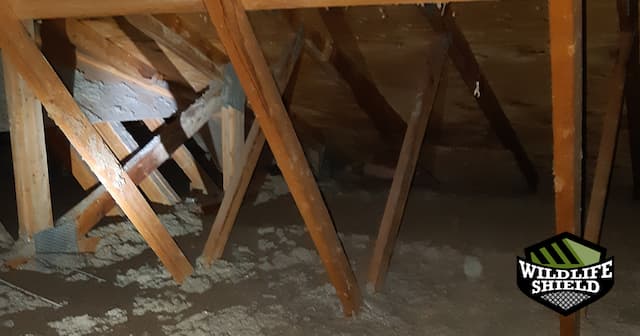
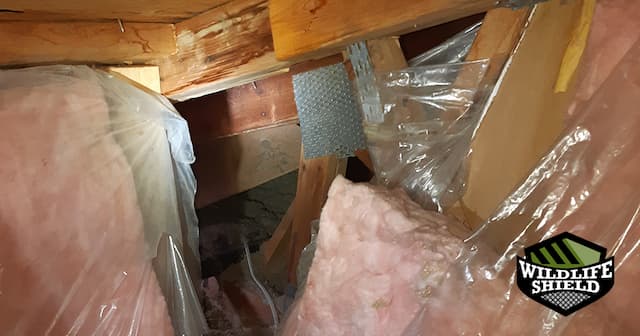
Initial Measures
The initial measures taken by the technician included attaching a one-way raccoon door to the entrance of the attic below the roof vent and the right of the window. There were no baby raccoons found in the attic after two searches but the raccoon was successfully removed and further exclusion was proposed by the technician.
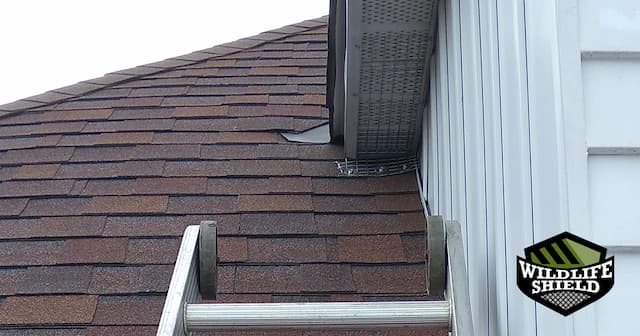
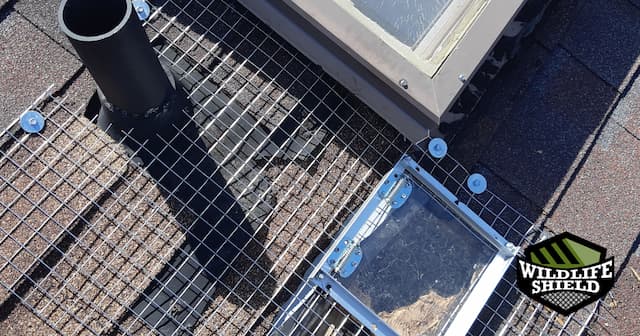
Proposed exclusion
The proposed exclusion by the technician was to attach a one-way door to the main entryway and to seal off the broken soffit giving the raccoon nowhere to go but out. Three plumbing vents were sealed off as well as another rooftop vent pipe. There was also proposed disinfection of the attic and a great deal of drywall repair done on-site. The damage caused by the raccoon was extensive but we got it out and eliminated the remaining signs of its presence. Ten roof vents were also covered using robber coated galvanized steel cages to prevent raccoons and wildlife access into the attic.
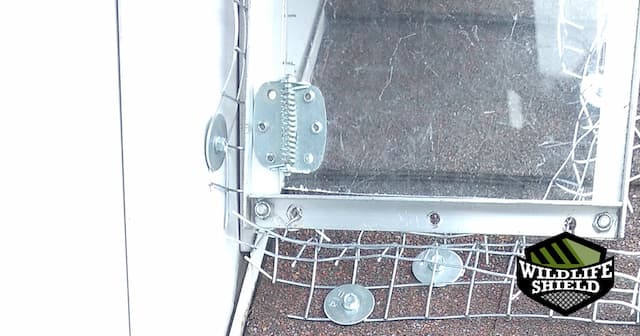
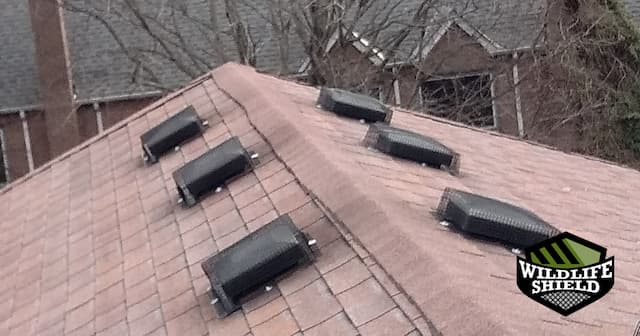
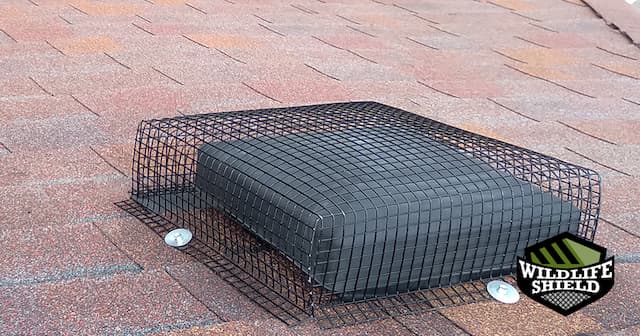
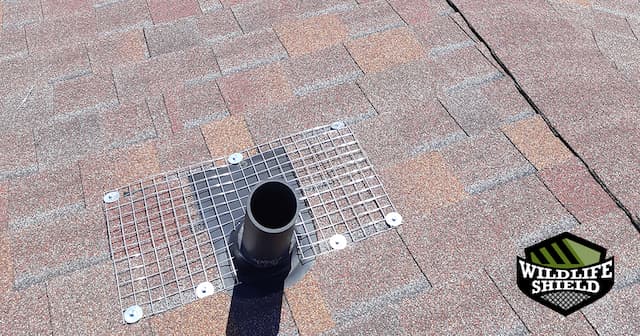
Conclusion
In conclusion, the raccoon was vacated and the customers were pleased that there was no longer a wild animal in their home. The attic was disinfected and the drywall replaced. and roof vents blocked from access. The raccoon has not returned since and the customers are pleased with the work. If you have a raccoon in your attic do not wait. Call raccoon control now for a free estimate over the phone.
